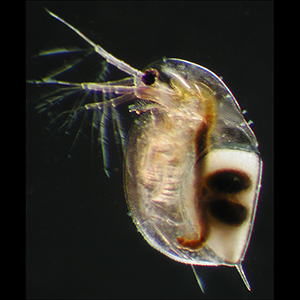Metabarcoding to monitor the crustacean zooplankton of a lake improves when using a reference DNA library from local samples

Submitted: 7 July 2022
Accepted: 16 January 2023
Published: 8 February 2023
Accepted: 16 January 2023
Abstract Views: 1840
PDF: 499
HTML: 101
Supplementary: 56
Supplementary Data: 88
HTML: 101
Supplementary: 56
Supplementary Data: 88
Publisher's note
All claims expressed in this article are solely those of the authors and do not necessarily represent those of their affiliated organizations, or those of the publisher, the editors and the reviewers. Any product that may be evaluated in this article or claim that may be made by its manufacturer is not guaranteed or endorsed by the publisher.
All claims expressed in this article are solely those of the authors and do not necessarily represent those of their affiliated organizations, or those of the publisher, the editors and the reviewers. Any product that may be evaluated in this article or claim that may be made by its manufacturer is not guaranteed or endorsed by the publisher.
Similar Articles
- Daniela Ghia, Gianluca Fea, Aurora Conti, Roberto Sacchi, Pietro Angelo Nardi, Estimating age composition in Alpine native populations of Austropotamobius pallipes complex , Journal of Limnology: Vol. 74 No. 3 (2015)
- Gianni TARTARI, Franco SALERNO, Elisa BURASCHI, Gabriele BRUCCOLERI, Claudio SMIRAGLIA, Lake surface area variations in the North-Eastern sector of Sagarmatha National Park (Nepal) at the end of the 20th Century by comparison of historical maps , Journal of Limnology: Vol. 67 No. 2 (2008)
- Pedro M. SÁNCHEZ-CASTILLO, Eduardo J. LINARES-CUESTA, D. FERNÁNDEZ-MORENO, Changes in epilithic diatom assemblages in a Mediterranean high mountain lake (Laguna de La Caldera, Sierra Nevada, Spain) after a period of drought , Journal of Limnology: Vol. 67 No. 1 (2008)
- Marco CANTONATI, Horst LANGE-BERTALOT, Diatom monitors of close-to-pristine, very-low alkalinity habitats: three new Eunotia species from springs in Nature Parks of the south-eastern Alps , Journal of Limnology: Vol. 70 No. 2 (2011)
- Ruben Ladrera, Miguel Cañedo-Argüelles, Narcís Prat, Impact of potash mining in streams: the Llobregat basin (northeast Spain) as a case study , Journal of Limnology: Vol. 76 No. 2 (2017)
- Emiliya KIRILOVA, Oliver HEIRI, Dirk ENTERS, Holger CREMER, André F. LOTTER, Bernd ZOLITSCHKA, Thomas HÜBENER, Climate-induced changes in the trophic status of a Central European lake , Journal of Limnology: Vol. 68 No. 1 (2009)
- Carolina D. PEÑALVA-ARANA, Marina MANCA, An SEM study of the nuchal organ in Daphnia himalaya (nov. sp.) embryos and neonates collected from the Khumbu region (Nepalese Himalayas) , Journal of Limnology: Vol. 66 No. 2 (2007)
- Valeria ROSSI, Carlo BELLAVERE, Giorgio BENASSI, Andrea GANDOLFI, Eletta B.A. TODESCHI, Paolo MENOZZI, Spatial segregation of Darwinula stevensoni (Crustacea: Ostracoda) genotypes in lentic and lotic habitats of Northern Italy , Journal of Limnology: Vol. 63 No. 1 (2004)
- Giuseppe Morabito, Nico Salmaso, Delio Ruggiu, Phytoplankton association patterns in the deep southern subalpine lakes (Part 1) , Journal of Limnology: Vol. 61 No. 1 (2002)
- Elisabetta Franchi, Antonella Carosi, Lucia Ghetti, Daniela Giannetto, Giovanni Pedicillo, Laura Pompei, Massimo Lorenzoni, Changes in the fish community of the upper Tiber River after construction of a hydro-dam , Journal of Limnology: Vol. 73 No. 2 (2014)
<< < 66 67 68 69 70 71 72 73 74 75 > >>
You may also start an advanced similarity search for this article.

 https://doi.org/10.4081/jlimnol.2023.2087
https://doi.org/10.4081/jlimnol.2023.2087






